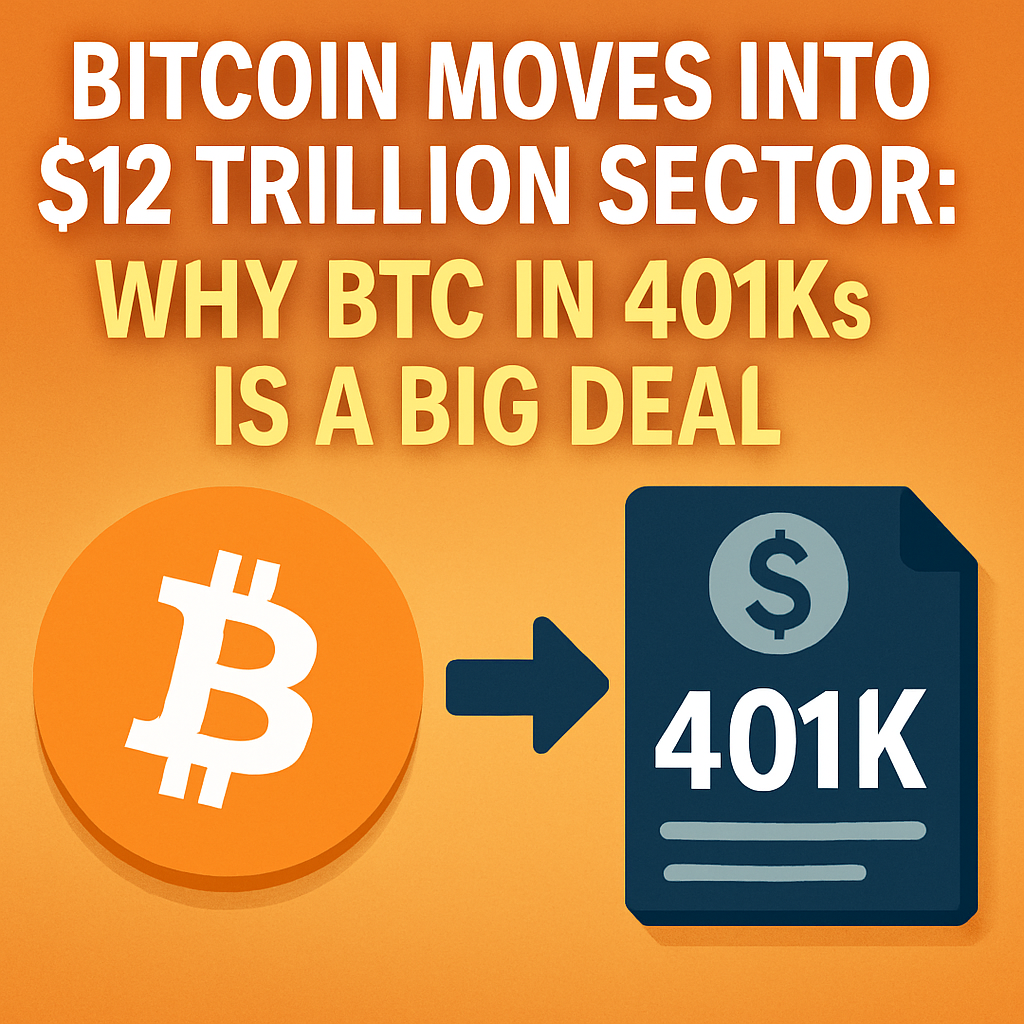The potential integration of Bitcoin (BTC), the world’s largest cryptocurrency, into the United States 401(k) retirement plans represents a landmark development for mainstream adoption. The US retirement landscape encompasses roughly $12 trillion in assets, with plan participants contributing approximately $50 billion every two weeks. If a modest allocation of just 1 percent of those assets were redirected into Bitcoin, it would equate to a continuous $120 billion in buying pressure, creating a persistent demand floor far exceeding the inflows generated by spot Bitcoin ETFs.
Tom Dunleavy, Head of Venture at Varys Capital, highlighted the significance of such structural inflows in an X post on August 7. Under the Employee Retirement Income Security Act of 1974 (ERISA), fiduciary consultants bear the responsibility for asset allocation and compliance. Over the past decade, these consultants have built expertise and governance structures capable of underwriting digital asset allocations ranging from 1 percent to 5 percent of plan assets. Should regulatory guidance clarify the permissibility of Bitcoin within 401(k) menus, plan sponsors may leverage this groundwork to recommend crypto allocations as a routine investment option.
Beyond the sheer scale of potential inflows, retirement plan integration offers unique advantages. Unlike one‐time ETF purchases, 401(k) contributions occur systematically with every payroll, delivering recurring capital injections. This regularity reduces volatility by smoothing entry points and incentivizes long‐term holding. Moreover, the demographic profile of 401(k) participants—typically younger, risk-tolerant savers—aligns with the growth prospects of digital assets, further reinforcing the case for adoption within defined contribution frameworks.
Regulatory considerations remain paramount. ERISA’s fiduciary standards mandate clear documentation of investment rationale, risk assessments, and valuation methodologies. Custody solutions must satisfy stringent security and audit requirements. Inclusion of Bitcoin may also hinge on IRS guidance related to tax treatment within retirement accounts. Nonetheless, the White House executive order on democratizing access to alternative assets underscores a policy shift recognizing the legitimacy of digital assets in retirement portfolios.
Critics point to Bitcoin’s price volatility and liquidity concerns, especially for large plan exposures. However, proponents argue that fiduciary guidelines and portfolio diversification can mitigate these risks. Historical data on ETF inflows demonstrates robust institutional demand; by comparison, the potential 401(k) inflows could reshape market dynamics. Financial services firms like Fidelity and Vanguard have already explored crypto custody and trading solutions. Widespread plan adoption could catalyze innovation in retirement technology, drive competition on fees, and expand investor choice.
Ultimately, opening the 401(k) market to Bitcoin would mark a pivotal moment in the evolution of digital assets. It would transition crypto from a niche alternative into a core component of retirement investing. The scale, regularity, and demographic reach of 401(k) contributions position them as a formidable catalyst for sustained demand, bridging the gap between traditional finance and the emerging crypto ecosystem. As regulatory clarity converges with fiduciary readiness, Bitcoin’s entry into the $12 trillion retirement market may unlock one of the largest structural inflows in its history.

Comments (0)